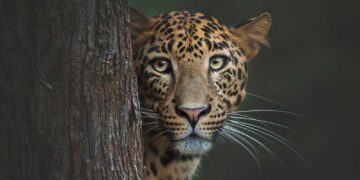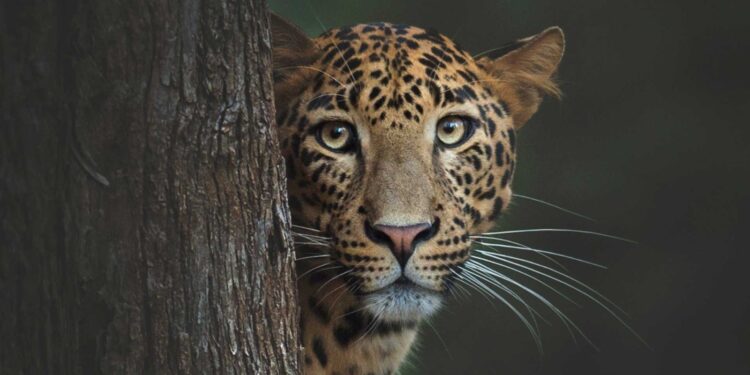Have you ever returned from a vacation with a camera roll full of blurry animal pictures? You’re not alone. Capturing stunning wildlife photography requires more than just pointing and clicking. It’s an art form that demands patience, knowledge, and techniques. But fear not, aspiring wildlife photographers! This guide will equip you with the tools and strategies to transform your “tourist snaps” into frame-worthy “trophy shots.”
Understanding Wildlife Photography
Before you embark on your next adventure, let’s delve deeper into wildlife photography’s unique challenges and rewards.
- Subject Movement: Unlike posing models, wild animals are unpredictable. They move fast, camouflage themselves, and often behave in unexpected ways. Patience and quick reflexes are essential.
- Lighting Conditions: Wildlife photography often occurs outdoors, where lighting can be harsh or scarce. Mastering exposure and understanding how to use natural light to your advantage are crucial skills.
- Environmental Factors: You’ll encounter a variety of terrains and weather conditions. Rain, dust, and extreme temperatures can test your equipment and patience. Be prepared with appropriate gear and protective measures.
- Ethical Considerations: Always prioritize the well-being of the animals. Respect their habitat, avoid disturbing them, and maintain a safe distance.
Mastering the Technical Aspects
Now that we understand the basic challenges let’s explore the technical aspects that will elevate your wildlife photography.
Equipment:
- Camera: While a high-end DSLR or mirrorless camera offers superior control, you can achieve impressive results with a good-quality bridge camera. Consider factors like zoom capabilities, low-light performance, and weather sealing.
- Lenses: Invest in a telephoto lens with a long focal length to bring distant subjects closer. Look for lenses with a wide aperture (f/2.8 or lower) for better low-light performance.
- Tripod: A sturdy tripod is crucial for capturing sharp images at slower shutter speeds, especially in low-light conditions.
- Beanbag: A beanbag provides a stable platform for resting your camera on uneven surfaces like jeep railings or safari vehicles.
- Filters: Circular polarizing filters can reduce glare and enhance colour saturation. In contrast, neutral density filters allow you to use slower shutter speeds for creative effects like silky water or motion blur.
Camera Settings:
- Aperture: In wildlife photography, a large aperture (low f-number) is often preferred to blur the background and isolate your subject. However, depending on the situation, you might need a slightly smaller aperture to ensure all parts of the animal are in focus.
- Shutter Speed: A fast shutter speed is essential to freeze the movement of your subjects. However, in low-light conditions, you might need to use a slower shutter speed and stabilize your camera with a tripod or beanbag.
- ISO: ISO controls your camera’s light sensitivity. While a higher ISO allows you to capture images in low light, it also introduces digital noise. Aim for the lowest possible ISO while maintaining a shutter speed that is fast enough for sharp images.
Composition:
- Rule of Thirds: Imagine dividing your frame into a 3×3 grid. Place your subject at intersecting points for a more dynamic composition.
- Leading Lines: Use natural lines in the environment, like branches or a riverbank, to draw the viewer’s eye towards your subject.
- Background: Pay attention to the background. Avoid backgrounds that are distracting or too busy.
Techniques for Capturing Stunning Wildlife Photos
Beyond technical knowledge, mastering specific techniques will elevate your wildlife photography game.
- Anticipation: Observe animal behaviour and anticipate their movements. For example, if a bird is perched on a branch, be ready to capture the moment it takes flight.
- Focus Tracking: Most modern cameras offer autofocus modes to track moving subjects. Utilize these features to ensure your wildlife stays sharp.
- Burst Mode: Use burst mode to capture a rapid sequence of images, increasing your chances of capturing the perfect moment.
- Panning: Try panning your camera with the subject while keeping the shutter speed slow for fast-moving animals. This creates a sense of motion and blurs the background.
- Creative Angles: Experiment with different angles and perspectives. Don’t be afraid to get low to the ground or zoom in for close-up details.
Planning Your Wildlife Photography Holiday
Now that you’re armed with the knowledge and skills, it’s time to plan your wildlife photography adventure! Consider these factors:
Destination: Choose a location renowned for its diverse wildlife. Research the specific animals you’d like to photograph and their habitats.
Wildlife Photography Holidays: Joining a specialized holiday can significantly enhance your experience. Companies like Tog Pro Holidays offer guided tours led by experienced wildlife photographers who can provide invaluable insights into animal behaviour, the best locations, and essential photography techniques. These tours often occur in remote locations with limited access, maximizing your chances of encountering unique wildlife.
Seasonality: Different seasons offer different opportunities. Research the best time to visit your destination to witness specific animal behaviour, like migrations or breeding rituals.
Permits and Regulations: Research any necessary permits or regulations for photography in your chosen location. Be responsible and respectful of local laws and environmental protections.
Packing Essentials: Pack appropriately for the climate and terrain. Don’t forget extra batteries, memory cards, lens wipes, rain gear, and comfortable clothing that blends into the environment.
Practice Makes Perfect: Before your trip, practice using your camera and experiment with different settings. Familiarize yourself with manual shooting mode and explore creative techniques.
Conclusion
The path from “tourist snaps” to “trophy shots” requires dedication and practice. But with the knowledge and techniques outlined above, you’ll be well on your way to capturing stunning wildlife photographs that tell a story. Remember, wildlife photography is a journey of discovery, patience, and respect for the natural world. Embrace the adventure, and let your camera capture the magic of the wild!
Bonus Tip: When returning from your trip, edit your photos. Utilize software like Adobe Photoshop or Lightroom to enhance colours, adjust exposure, and sharpen details.
Ready to embark on your wildlife photography adventure? Research your dream destination, invest in the right equipment, and consider joining a specialized wildlife photography holiday with Tog Pro Holidays. With dedication and the knowledge in this guide, you’ll be capturing breathtaking wildlife images in no time!








































